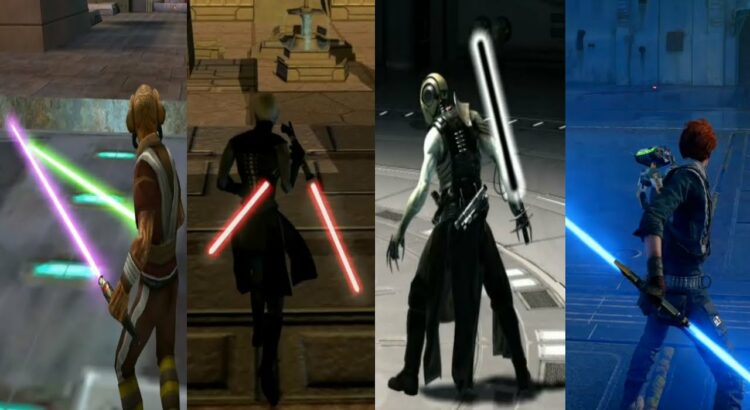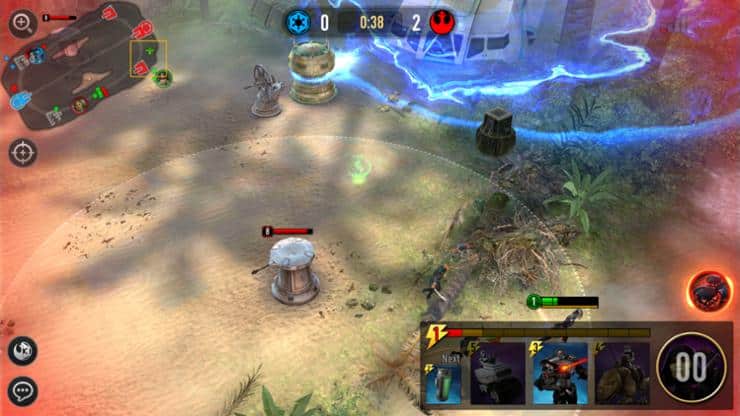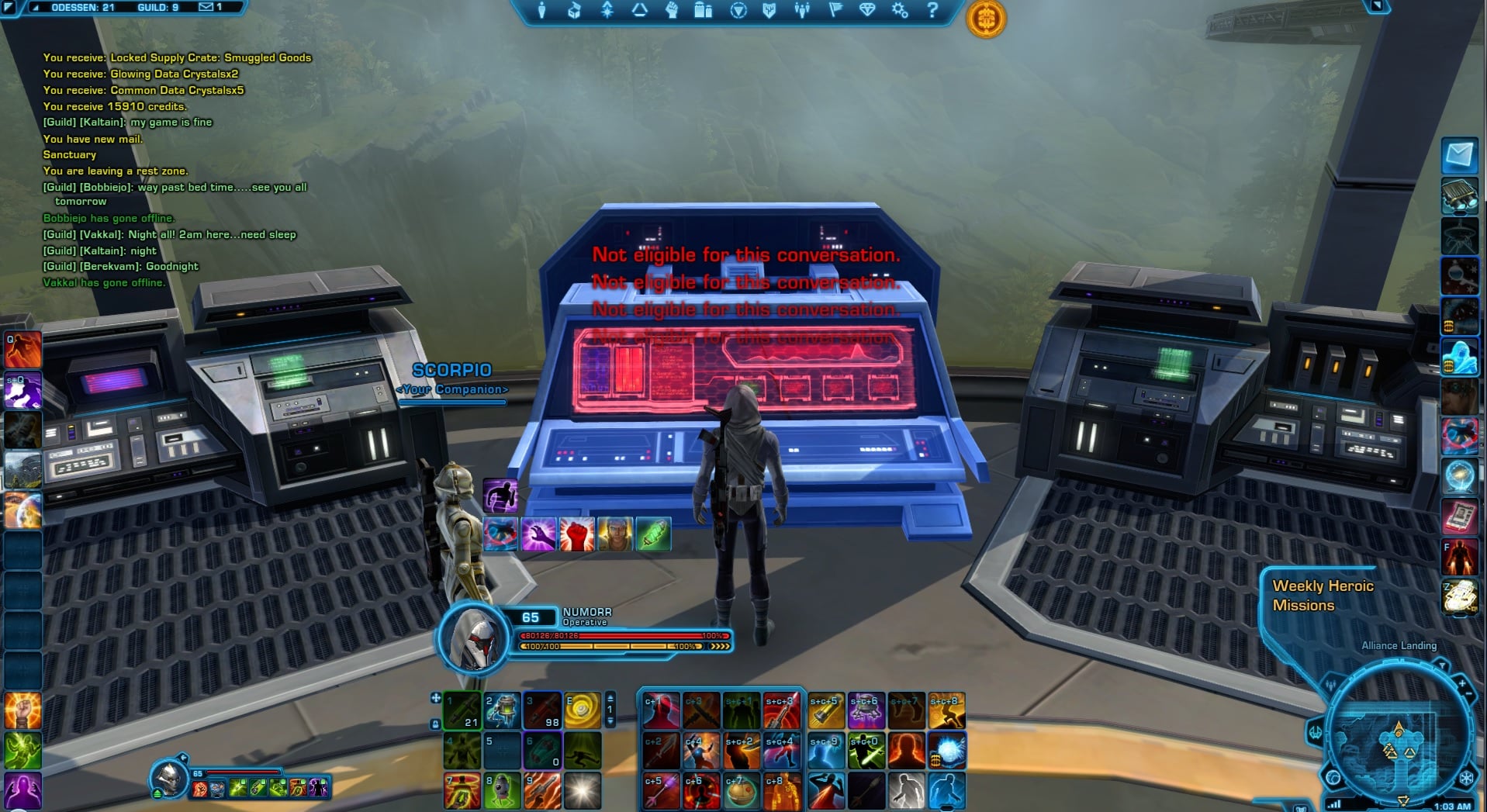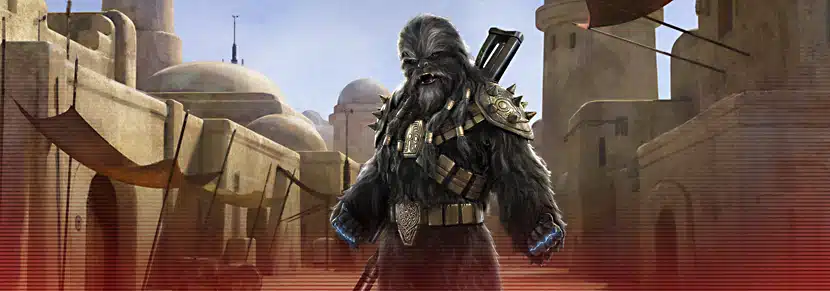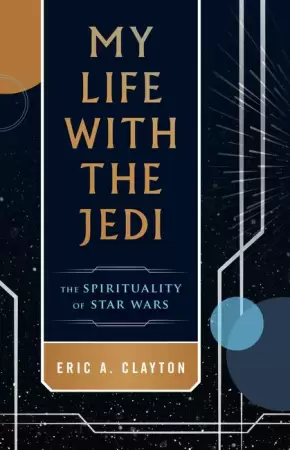The Star Wars franchise is an undeniable cultural force, having captivated the imaginations of generations since the original film’s debut in 1977. Central to the series’ appeal are its epic lightsaber battles, which have been meticulously recreated and expanded upon in numerous Star Wars games by artificial intelligence (AI). This article will examine the different approaches to lightsaber combat in various Star Wars games, discussing the strengths and weaknesses of each system and their impact on player experiences.
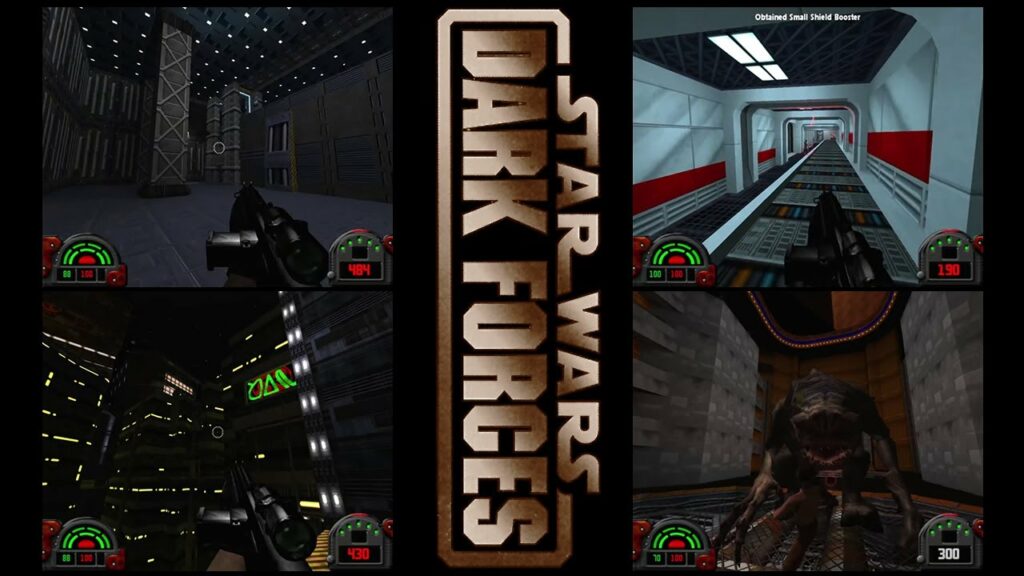
Section 1: Early Beginnings and the Evolution of Lightsaber Combat Mechanics
1.1 Star Wars (1983) and The Empire Strikes Back (1985) In the early days of Star Wars games, lightsaber combat was a simple affair. In the Atari 2600’s Star Wars (1983) and The Empire Strikes Back (1985), players controlled Luke Skywalker, who could only swing his lightsaber left and right to deflect blaster fire from enemies. These rudimentary mechanics were the foundation of future lightsaber combat systems in Star Wars games.
1.2 Star Wars: Dark Forces (1995) The release of Star Wars: Dark Forces in 1995 marked a significant departure from previous titles. This first-person shooter introduced lightsaber combat with a focus on timing and accuracy rather than flashy moves. Players could block incoming fire and engage in simple melee attacks. While not particularly deep, Dark Forces was a pivotal step in the evolution of lightsaber combat mechanics.
1.3 Jedi Knight Series (1997-2003) The Jedi Knight series, starting with Star Wars: Jedi Knight – Dark Forces II in 1997 and culminating with Star Wars: Jedi Knight – Jedi Academy in 2003, revolutionized lightsaber combat in gaming. These games introduced a more complex system that incorporated various attack styles, combos, and defensive moves. Players could now engage in more strategic and dynamic duels, making the experience feel more authentic and immersive.
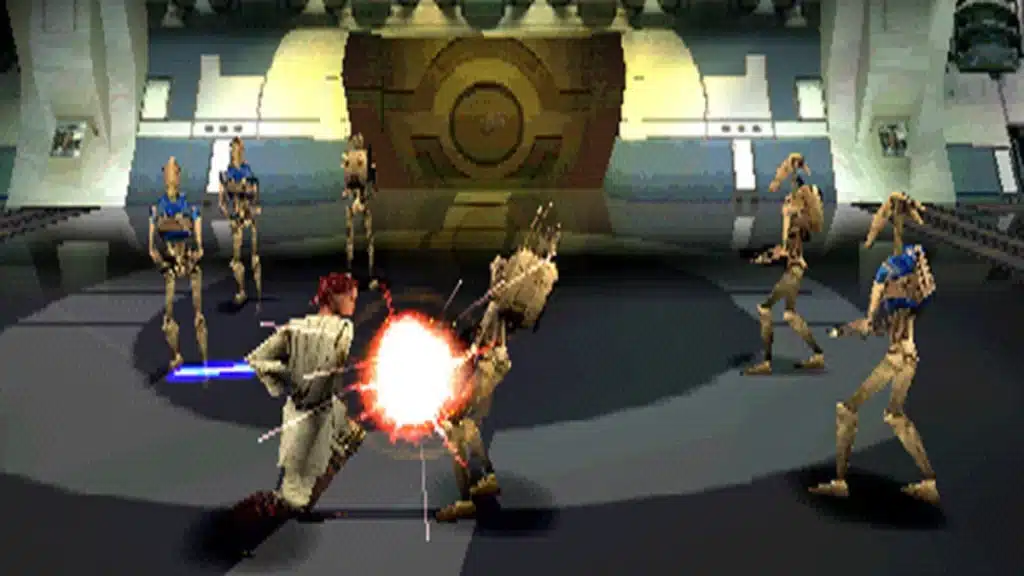
Section 2: Key Approaches to Lightsaber Combat Mechanics
2.1 Arcade Style: Star Wars Trilogy Arcade (1998) and Star Wars: Episode I – Jedi Power Battles (2000) The late 1990s and early 2000s saw the release of arcade-style Star Wars games that prioritized fast-paced, action-packed lightsaber combat. Star Wars Trilogy Arcade (1998) and Star Wars: Episode I – Jedi Power Battles (2000) featured simplified controls and mechanics, with players unleashing powerful combos and flashy moves by pressing a few buttons. These games were more focused on entertaining and accessible gameplay than in-depth combat systems.
2.2 Tactical Approach: Star Wars: Knights of the Old Republic (2003) and Star Wars: Knights of the Old Republic II – The Sith Lords (2004) These critically acclaimed role-playing games (RPGs) took a more tactical approach to lightsaber combat. Instead of real-time action, battles played out through a series of turn-based commands, with players selecting from various offensive and defensive moves. This slower pace allowed for a more strategic experience, as players had to consider factors such as character attributes, abilities, and the strengths and weaknesses of their opponents.
2.3 Realistic Simulations: Star Wars: Jedi Knight Series (1997-2003) and Star Wars: The Force Unleashed (2008) The Jedi Knight series and Star Wars: The Force Unleashed aimed to create more realistic and immersive lightsaber combat systems. These games incorporated advanced physics, collision detection, and real-time damage calculations, resulting in more believable and satisfying duels. Players had to master various attack styles, combos, and defensive maneuvers to succeed in combat, making the experience both challenging and rewarding.
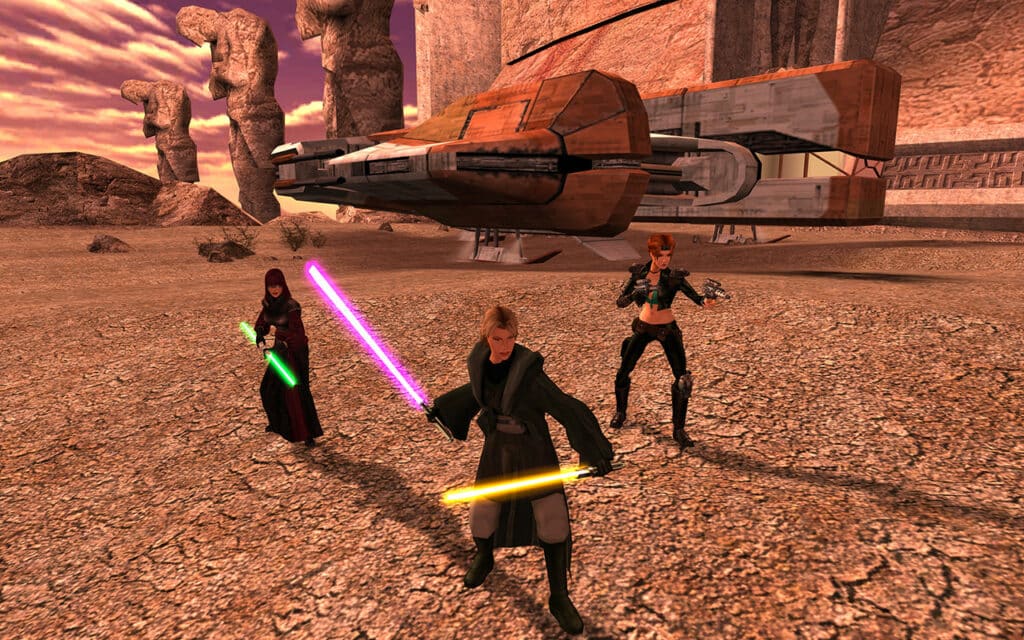
Section 3: Strengths and Weaknesses of Different Lightsaber Combat Systems
3.1 Strengths and Weaknesses of Arcade-Style Combat: Arcade-style lightsaber combat, as seen in Star Wars Trilogy Arcade and Star Wars: Episode I – Jedi Power Battles, prioritizes accessibility and entertainment. These games offer fast-paced, action-packed gameplay that can be enjoyed by players of all skill levels.
Strengths:
- Easy-to-learn controls, allowing players to quickly jump into the action.
- Spectacular visuals and cinematic moves that capture the excitement of the films.
- Accessible gameplay that appeals to a wide range of players, including casual fans.
Weaknesses:
- Simplistic combat mechanics that may lack depth for more experienced players.
- Limited replay value, as gameplay can become repetitive over time.
- Reliance on flashy visuals and effects rather than strategic and engaging combat.
3.2 Strengths and Weaknesses of Tactical Approach: Tactical lightsaber combat, featured in games such as Star Wars: Knights of the Old Republic and its sequel, offers a more strategic and thoughtful experience. These games encourage players to carefully consider their moves and the attributes of their characters, as well as the strengths and weaknesses of their opponents.
Strengths:
- A deeper, more strategic combat system that rewards careful planning and decision-making.
- Greater emphasis on character development and customization.
- Engaging gameplay that caters to players who enjoy turn-based RPG mechanics.
Weaknesses:
- Slower-paced gameplay that may not appeal to fans of action-oriented games.
- A steeper learning curve due to the complexity of the combat system.
- May not fully capture the fast-paced, exhilarating nature of lightsaber battles in the films.
3.3 Strengths and Weaknesses of Realistic Simulations: Realistic lightsaber combat simulations, as seen in the Jedi Knight series and Star Wars: The Force Unleashed, strive to create authentic and immersive experiences. These games feature advanced physics, collision detection, and real-time damage calculations to deliver believable and satisfying duels.
Strengths:
- A more immersive and authentic lightsaber combat experience.
- Complex and dynamic combat mechanics that challenge and reward players.
- Realistic visual effects and sound design that enhance the gameplay experience.
Weaknesses:
- A potentially steep learning curve due to the complexity of the combat system.
- Greater reliance on hardware capabilities, which may limit the game’s accessibility on older systems or consoles.
- May require more time and patience to master the gameplay mechanics, potentially alienating casual players.
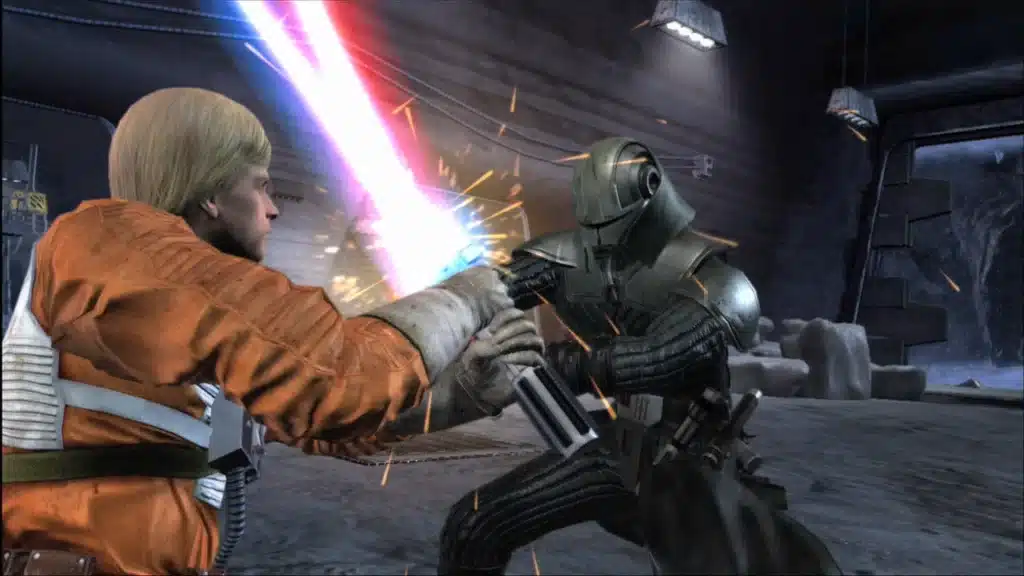
Section 4: The Impact of Lightsaber Combat Mechanics on Player Experience
4.1 Immersion and Engagement: The quality and depth of lightsaber combat mechanics can greatly impact a player’s immersion and engagement with a Star Wars game. Realistic simulations and tactical approaches offer greater depth and challenge, which can lead to a more satisfying experience for dedicated players. On the other hand, arcade-style combat may be more appealing to casual players or those seeking a more accessible, action-packed experience.
4.2 Replay Value and Longevity: Games with deeper and more complex lightsaber combat systems, such as tactical RPGs and realistic simulations, often have greater replay value due to the variety of strategies and character builds available to players. Arcade-style games, while initially entertaining, may suffer from limited replay value as their gameplay can become repetitive over time.
4.3 Accessibility and Inclusivity: The complexity of a game’s lightsaber combat mechanics can impact its accessibility and inclusivity. Arcade-style games are generally more accessible to a wider range of players, including those with little gaming experience or who may be unfamiliar with Star Wars lore. In contrast, games with more complex and intricate combat systems may be better suited for dedicated fans and experienced gamers who are seeking a deeper and more challenging experience.
4.4 Balancing Authenticity and Fun: Creating an engaging lightsaber combat system involves striking a balance between authenticity and fun. While realistic simulations may provide a more authentic representation of the iconic lightsaber battles seen in the films, they may also require more time and effort to master, potentially alienating casual players. Conversely, arcade-style games prioritize fun and accessibility but may sacrifice depth and authenticity in the process. Striking the right balance between these two approaches is crucial for delivering a satisfying and engaging player experience.
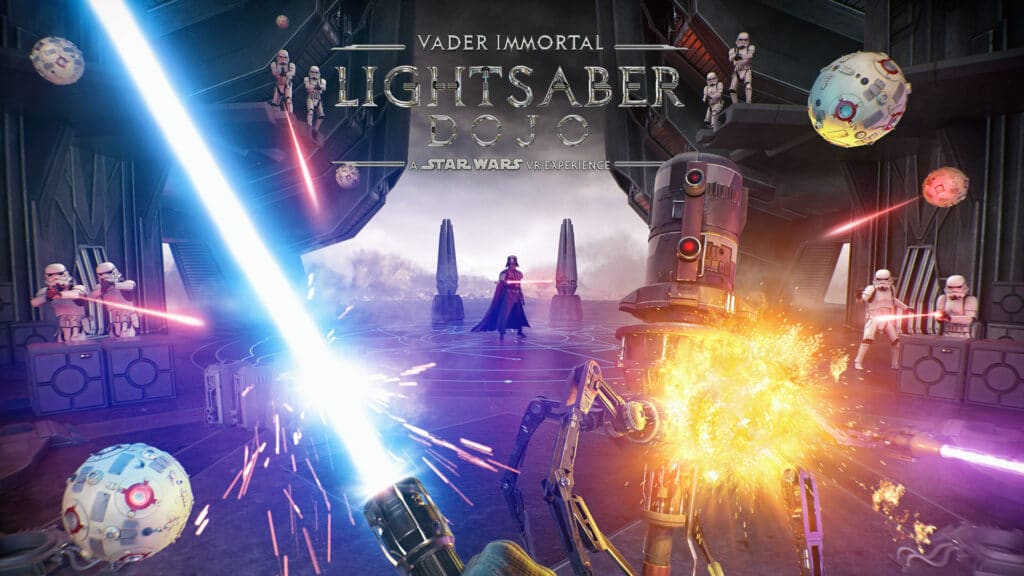
Section 5: The Future of Lightsaber Combat Mechanics in Star Wars Games
5.1 Virtual Reality and Lightsaber Combat: Virtual reality (VR) technology has the potential to revolutionize lightsaber combat mechanics in Star Wars games, offering players an unprecedented level of immersion and interactivity. With the ability to wield a lightsaber in a fully realized 3D environment, players can experience combat like never before. However, developers must continue to refine VR controls and physics to create a seamless and intuitive gameplay experience.
5.2 Adaptive AI and Dynamic Duels: Advancements in artificial intelligence (AI) can lead to more dynamic and challenging lightsaber duels in future Star Wars games. Adaptive AI can learn from a player’s combat style, adjusting its tactics and difficulty to create a more engaging and varied experience. This technology could elevate lightsaber combat to new heights, providing players with unique and memorable battles each time they play.
5.3 Incorporating Fan Feedback and Community Collaboration: Developers can benefit from actively engaging with the fan community when designing and refining lightsaber combat mechanics. By incorporating player feedback, developers can ensure that their games cater to the desires and expectations of the fanbase, resulting in a more satisfying and well-received final product.
5.4 Continued Innovation and Evolution: As technology continues to advance, developers will have new opportunities to innovate and expand upon existing lightsaber combat mechanics. By embracing new technologies and remaining open to experimentation, developers can push the boundaries of what is possible in Star Wars games, delivering fresh and exciting experiences for players to enjoy.

Conclusion
Throughout the history of Star Wars games, the depiction of lightsaber combat has evolved significantly, encompassing a wide range of approaches and styles. From the simplistic mechanics of early games to the intricate and realistic systems seen in more recent titles, each approach has its own unique strengths and weaknesses.
The future of lightsaber combat in Star Wars games is full of potential, with opportunities to further enhance player immersion, engagement, and satisfaction through new technologies and innovations. By striking the right balance between authenticity and fun, and by actively collaborating with the fan community, developers can continue to deliver unforgettable gaming experiences that capture the magic of the Star Wars universe.


